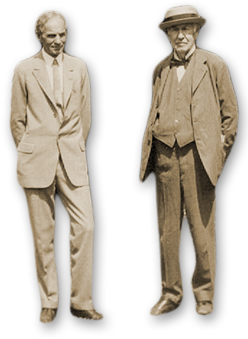How did Edison protect his plants from cold weather?
December 9, 2010
Now that cold temperatures have arrived at the Estates, our garden staff has to keep a close eye on the weather and take action to protect some of the plants we have in the gardens. We use a high-quality frost cloth to cover the tropical and sub-tropical plants whenever freezing temperatures are predicted.
But how did Thomas Edison protect his vast array of plants? Actually, in much the same way we do today. Here’s a note Edison wrote to the Estates caretaker in 1886:


The note reads, “I will send you about 1000 yards of common print cloth, which you can place around the more tender shoots when a freeze approaches. This cloth will prevent radiation if run through boiled linseed oil and hung out until dry…”
The “radiation” Edison refers to is the radiating heat of the plants and the ground – the cloth traps that heat and protects the plants overnight. Linseed oil was probably used to give the cloth a thicker, semi-waterproof coating to trap more heat. Linseed oil, which is made from flax seeds, is no longer used for that purpose, in part due to its flammable nature.
For tips on how to protect your plants this winter season, check out this website created by the University of Florida Extension Service.
Britta Hanson Soderqvist, Plant Curator


